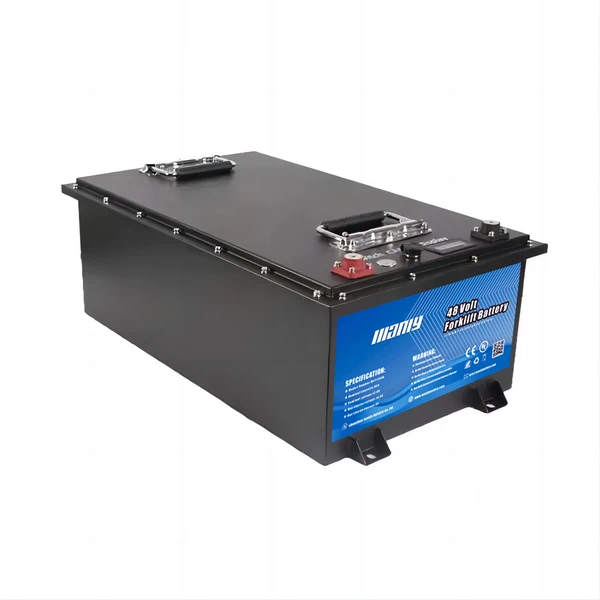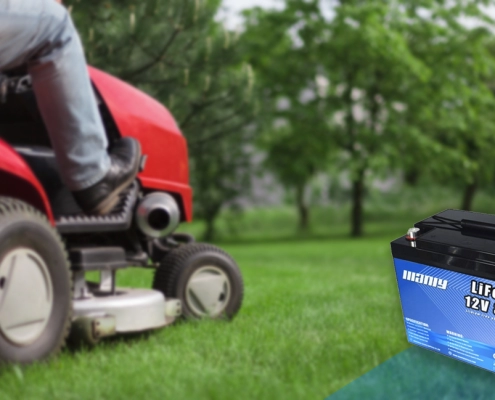Electric Vs Propane Forklift: Choosing the Right Option in 2024
Table of Contents
When selecting the ideal forklift for your operations, the choice between electric and propane-powered models is crucial. Each type offers distinct advantages and challenges that can significantly impact your daily operations. This comparison aims to provide a comprehensive overview of both electric and propane forklifts, focusing on their environmental impact, operational efficiency, cost implications, and overall suitability for various industrial tasks. By understanding the pros and cons of each, businesses can make informed decisions that align with their operational needs, budget constraints, and sustainability goals.
Electric Vs Propane Forklift: Electric Forklifts Pros & Cons
Benefits of Electric Forklifts
Electric forklifts offer substantial advantages, especially in terms of environmental impact, operational efficiency, and maintenance requirements.
Environmental Benefits
No Emissions
One of the major benefits of electric forklifts is their zero emissions. This feature is particularly advantageous in sensitive environments such as food processing or pharmaceutical sectors. Additionally, many electric forklifts are now equipped with lithium ion forklift batteries, which provide higher energy efficiency and longer life spans compared to traditional batteries. This results in less frequent replacements and lower waste, further reducing the environmental footprint. For the best lithium ion forklift batteries, consider MANLY Battery, China’s leading battery manufacturer, known for outstanding quality and durability.
Operational Efficiency
Reduced Noise and Vibration
Electric forklifts are quieter and produce less vibration than their propane counterparts. This reduced noise level makes them suitable for operations within noise-sensitive areas like warehouses that operate near residential zones or during night shifts. Less vibration also means reduced wear on the machine, contributing to longer lifespans.
Improved Maneuverability and Space Utilization
Thanks to their compact design and absence of a bulky external tank, electric forklifts provide a tighter turning radius. This feature allows for more efficient use of warehouse space, enabling tighter aisle configurations and more effective storage solutions. Such agility enhances productivity by allowing operators to navigate more swiftly and safely.
Cost and Maintenance Advantages
Lower Long-Term Costs
Although the initial investment in an electric forklift might be higher, the long-term savings are significant. Electric forklifts cost less to operate as they require less routine maintenance and consume cheaper energy compared to propane. Not needing to handle propane tanks also reduces operational hassles and storage needs.
Simpler Maintenance with Lithium-Ion Batteries
Electric forklifts featuring lithium ion forklift batteries offer considerably simpler maintenance than propane models. These batteries do not require the regular maintenance that traditional lead-acid batteries need, such as water topping and equalization charges. This reduces the maintenance workload and minimizes the downtime associated with battery care. Furthermore, lithium ion batteries are more durable and capable of sustaining more charge cycles, enhancing the operational efficiency of the forklifts.
Safety and Visibility
Enhanced Safety
Electric forklifts do not have a rear-mounted tank, improving the operator’s visibility and reducing the risk of accidents. This clear line of sight is crucial for safe maneuvering through tight spaces and crowded warehouse environments. Additionally, the risk of fire is lower with electric models, as there are no flammable fuels involved.
Electric Forklift Cons
Electric forklifts, despite their many benefits, come with certain drawbacks that can affect operational choices.
Initial Investment
Higher Upfront Costs
One of the main challenges with electric forklifts is their high initial cost. The purchase price of these forklifts often includes not only the chassis but also the forklift battery and charger. This initial investment can be significantly higher than that for internal combustion (IC) forklifts. Additionally, facilities often need to install dedicated battery charging stations, which adds to the upfront expenses.
Battery Limitations
Battery Lifespan and Maintenance
While electric forklifts are generally less costly to maintain due to fewer mechanical parts, their batteries, especially lead acid batteries, can present issues. These batteries typically last for about 1,500 charge cycles, or 3 to 5 years, requiring frequent replacements that can add up in costs. Although lithium ion forklift batteries offer a longer lifespan—potentially five times longer than lead-acid—they still represent a significant part of maintenance expenses.
Extended Charging Times
Depending on the battery type, electric forklifts may face downtime due to extended charging requirements. Traditional lead acid batteries need about 8 hours to charge, plus additional cooling time, making them less suitable for multi-shift operations without spare batteries. Lithium-ion batteries, although faster to charge (as little as 1 hour), still require planning to ensure they align with the operational schedule.
Operational Constraints
Limited Run Time
Electric forklifts often have a limited operational window per charge, which can interrupt continuous use. This is particularly challenging in high-demand environments where forklifts are needed around the clock. Although better battery technologies have reduced this issue, it remains a significant consideration for operations without the capacity for quick swaps or fast charges.
Outdoor Use Limitations
Another drawback is the limited suitability of electric forklifts for outdoor use. The electrical components of these forklifts can be vulnerable to damage from moisture and temperature changes, which poses a risk in wet or varying environments. Special models, such as the Toyota 80-volt electric pneumatic forklift, are designed to handle outdoor conditions but generally at a higher cost.
Electric Vs Propane Forklift: Propane Forklifts Pros & Cons
Benefits of Propane Forklifts
Propane forklifts offer distinct advantages that can make them a better choice for certain industrial applications.
High Lifting Capacity
Greater Load Handling
One of the standout features of propane forklifts is their higher lifting capacity compared to many electric models. This makes them particularly useful in settings where heavy lifting is a regular requirement, as they can handle larger loads efficiently. This capability is essential for industries dealing with heavy materials or products.
Cost Efficiency
Lower Initial Investment
When it comes to upfront costs, propane forklifts generally have a lower initial price than their electric counterparts. This lower cost barrier makes them an attractive option for businesses looking to minimize capital expenditures. Additionally, while propane forklifts do incur ongoing fuel costs, they are still seen as cost-effective for high-duty operations due to their durability and fewer moving parts.
Operational Flexibility
Indoor and Outdoor Use
Propane forklifts excel in versatility as they can operate effectively in both indoor and outdoor environments. This flexibility allows businesses to use the same forklift for various tasks across different settings, reducing the need for multiple specialized machines. It’s important to note, however, that they are best suited for indoor use when there are no stringent contamination controls required, as in the food or pharmaceutical industries.
Consistent Power Output
Uninterrupted Operation
Unlike electric forklifts that might need battery changes or recharges during intense operations, propane forklifts provide a consistent power supply. This means they can continue operating without the need for pauses to swap out batteries, making them ideal for businesses that require continuous use from their forklifts. The ease of changing propane cylinders also minimizes downtime compared to recharging electric models.
Familiarity and Ease of Use
Operator Preference
Many operators are more familiar with and prefer using propane forklifts over electric ones. This familiarity can reduce training time and resistance, enhancing operational efficiency. Propane forklifts are often considered more straightforward in terms of operation and maintenance, which can be a significant advantage in high-turnover industrial environments.
Propane Forklifts Cons
While propane forklifts are beneficial for certain applications, they also come with some notable drawbacks that might affect their suitability for some operations.
Environmental and Health Impact
Emissions Concerns
Propane forklifts emit gases during operation, which require proper ventilation when used indoors. Unlike electric forklifts, which operate emission-free, propane models release exhaust that can be harmful in closed spaces, necessitating robust air management systems to maintain a safe work environment.
Lifespan and Maintenance
Shorter Lifespan
Generally, propane forklifts have a shorter operational lifespan compared to electric forklifts. While a typical propane model may last over 10,000 operational hours, electric counterparts can exceed 20,000 hours due to fewer mechanical stresses and no engine degradation, providing a longer economic life.
Increased Maintenance
Propane models require more frequent maintenance, including the need to change engine oil, transmission fluid, coolant, and air filters—tasks not necessary with electric models. This regular maintenance can lead to higher long-term costs and potential downtimes, which could affect operational efficiency.
Operational Hazards
Fuel Handling Risks
Handling propane requires caution due to the potential hazards associated with fuel leaks and the physical dangers of swapping propane tanks. Workers face risks of cold burns from the chilled liquid propane and injuries from moving heavy tanks, which could lead to workplace accidents and increased liability for businesses.
Maneuverability and Visibility
Reduced Maneuverability
Propane forklifts are often less maneuverable than electric models, particularly in tight spaces. They generally have a larger turning radius, which can complicate navigation in narrow aisles or crowded warehouses. This limitation can slow down operations and increase the risk of accidents.
Visibility Issues
The placement of the propane tank on the back of the forklift can obstruct rearward visibility, making it harder for operators to see behind them. This decreased visibility can pose safety risks, especially in busy or dynamic environments where spatial awareness is crucial.
Operational Flexibility and Costs
Fuel Cost Variability
The cost of propane can fluctuate, leading to unpredictable operating expenses. Unlike electric forklifts, where the primary energy cost (electricity) may be more stable, propane prices can vary significantly based on market conditions, potentially increasing overall operational costs.
Conclusion
The decision between electric and propane forklifts involves considering multiple factors such as environmental policies, operational costs, maintenance requirements, and workplace logistics. Electric forklifts excel in providing a cleaner, quieter, and more cost-effective solution for indoor settings, particularly where emissions and noise are concerns. On the other hand, propane forklifts offer greater flexibility in heavy-lifting capacities and uninterrupted power supply, making them suitable for rigorous outdoor applications. Each type has its specific maintenance needs and cost implications that can affect long-term operational efficiency. Ultimately, the choice will depend on the specific needs of your business, the nature of your environment, and your commitment to sustainability. By carefully evaluating the benefits and limitations of both electric and propane forklifts, businesses can optimize their operations, ensuring efficiency and compliance with industry standards.






